Q
Which one is bigger, Sonata or Altima?
Both Sonata and Altima are excellent car models. In terms of size, Sonata is larger, measuring 4,945mm in length, 1,860mm in width, and 1,445mm in height, with a wheelbase of 2,875mm. Meanwhile, Altima has dimensions of 4,901mm in length, 1,850mm in width, and 1,447 (or 1,450)mm in height, and its wheelbase is 2,825mm. The larger size means that Sonata may offer more spacious interior space, especially in the rear - seat legroom and lateral space, providing a more comfortable ride. Additionally, Sonata's larger size gives it a more impressive appearance. However, the perception of a vehicle's "size" is also influenced by the internal layout design. In actual experience, the difference in seating space between the two models may not be as significant as the data suggests. It is recommended that you visit a dealership to test drive these two cars in person so that you can make a more approporiate choice.
Special Disclaimer: This content is published by users and does not represent the views or position of PCauto.
Related Q&A
Q
What is the life expectancy of Hyundai Sonata Hybrid?
The service life of the Hyundai Sonata Hybrid can vary depending on multiple factors. Generally speaking, the battery of the Sonata Hybrid usually lasts about 5 years. As for other components, Hyundai offers a 5 - year or 300,000 - kilometer warranty for the whole vehicle, which reflects the expected durability of the vehicle under normal use conditions. The warranty periods for some core components, such as the power battery assembly, drive motor assembly, motor controller assembly, and vehicle controller assembly, are even longer, sometimes up to 8 years or 150,000 kilometers. Regular maintenance, good driving habits, and usage conditions all play important roles. If properly maintained, serviced on time, and driven carefully, this car has the potential to serve you for over 10 years and cover a mileage of as much as 200,000 kilometers or more.
Q
Which model of Hyundai Sonata is the most expensive ?
Currently, the most expensive model of Hyundai Sonata in Malaysia is the Sonata N-Line version, with an official price of approximately RM218,888 (excluding insurance). This high-performance version is equipped with a 2.5L Turbo GDi four-cylinder engine, capable of outputting 290 horsepower and 422 Nm of torque. Paired with an 8-speed wet dual-clutch transmission and front-wheel drive, it can accelerate from 0 - 100 km/h in just 6.2 seconds.
Compared with the standard Sonata (equipped with a 1.6L Turbo or 2.0L naturally aspirated engine), in addition to its powerful performance, the N-Line is equipped with a sport-tuned suspension, 19-inch wheels, an exclusive N Line exterior kit (including a more aggressive aerodynamic design and quad exhaust pipes), and an all-black interior with red stitching, giving it an overall sporty coupe style.
Although it's price is high, the N-Line version offers a comprehensive configurations, including the advanced Hyundai SmartSense active safety system (such as SCC Smart Cruise Control and FCA Forward Collision Warning), a panoramic sunroof, and a Bose sound system. It's a great choice for consumers who seek both performance and luxury.
Q
How about the speed performance of Hyundai Sonata?
The speed performance varies among different models of the Sonata. The top speed of the 2020 Hyundai Sonata 2.5 Premium can reach 210 km/h, while the top speeds of the 2017 Hyundai Sonata 2.0 Elegance and Hyundai Sonata 2.0 Executive are 200 km/h. These figures reflect the vehicle's potential in terms of power performance. However, in actual driving, it's difficult to reach the vehicle's top speed due to factors such as road conditions, traffic regulations, and driving behavior. For example, the speed limits on ordinary city roads are usually quite low. Although the speed limits on highways are relatively higher, it's not allowed to speed at will. It is recommended that everyone abide by the regulations while driving, reasonably control the speed according to the actual situation, and ensure driving safety.
Q
What's the engine displacement of Hyundai Sonata?
Different models of Sonata have various engine displacements. For example, the 2020 Hyundai Sonata 2.5 Premium is equipped with an engine with a displacement of 2497cc, which can provide ample power to meet the needs of daily driving and some driving scenarios with power requirements. As for the 2017 Hyundai Sonata 2.0 Elegance and Hyundai Sonata 2.0 Executive, their engines have a displacement of 1999cc. Relatively speaking, they may perform better in terms of fuel economy and can also provide stable power output for the vehicle. Engines with different displacements each have their own characteristics. Consumers can choose the model that suits them according to their own driving habits, such as the demand for power and considerations regarding fuel consumption.
Q
What's the service life of Hyundai Sonata's spark plugs?
The service life of the Hyundai Sonata's spark plugs depends on their types. The more affordable nickel alloy spark plugs typically last about 20,000 - 30,000 kilometers. Platinum spark plugs, with better heat and corrosion resistance, can be used for 60,000 - 80,000 kilometers. Iridium spark plugs, known for their high ignition performance, usually have a service life of 80,000 - 100,000 kilometers or even longer.
However, other factors can also have an impact. If the vehicle often drives under harsh conditions such as extreme temperatures, high humidity, and dusty areas, or experiences frequent starting and stopping, the spark plugs may wear out more quickly. Aggressive driving habits like rapid acceleration and hard braking can also increase the engine load and accelerate the aging of the spark plugs. Therefore, although the above are general reference standards, it's very important to regularly check the condition of the spark plugs and follow the vehicle maintenance manual for optimal performance.
Q
Does Hyundai Sonata have spark plug wires?
Yes, Hyundai Sonata is equipped with spark plugs, but it doesn't have the traditional externally exposed spark plug wires. Spark plugs are crucial components in the engine's ignition system, as they generate electric sparks to ignite the air - fuel mixture in the engine's combustion chamber, enabling the engine to operate properly.
With the development of modern automotive technology, many vehicles, including the Hyundai Sonata, have adopted the Distributorless Ignition System (DIS) or the Direct Ignition System (DI). In these systems, the ignition coils are directly installed on top of the spark plugs, providing high - voltage electricity directly to the spark plugs. They no longer rely on the traditional long spark plug wires to transmit high - voltage electricity.
This design reduces electromagnetic interference, improves ignition efficiency and engine performance, and also decreases the likelihood of spark plug wire failures, such as electrical leakage and aging. At the same time, it enhances the overall reliability of the vehicle and its fuel economy.
Q
How many cylinders does Hyundai Sonata have?
Whether it's the regular version or the N-Line version, the Sonata features a 4-cylinder (inline-four) engine layout, which is also a common engine configuration for mainstream mid-size sedans these days. This setup can not only deliver decent power output but also balance it with fuel efficiency. Hyundai has invested lot in developing turbocharged engine technology in recent years. For example, the SmartStream series of engines has optimized combustion efficiency and reduced emissions, enabling the four-cylinder engine to achieve performance comparable to that of a six-cylinder engine. If car owners prefer more potent power, they might need to consider higher-end rear-wheel-drive or all-wheel-drive performance cars. However, for general family use or mild sporty driving needs, the 1.6T or 2.5T four-cylinder engines are good enough for daily driving and highway cruising.
Q
How much does it cost to change Hyundai Sonata's spark plugs ?
The cost of replacing the spark plugs of Hyundai Sonata ranges from approximately RM200 to RM500, depending on the model year, engine type (1.6T or 2.5T), and the brand of spark plugs used (such as NGK, Denso, or original factory parts). A standard 1.6L Turbo engine usually uses iridium or platinum spark plugs, which cost around RM50 to RM150 each. On the other hand, the 2.5L Turbo engine (N - Line version) may require higher - performance spark plugs, which are slightly more expensive (around RM80 to RM200 each).
In addition, labor costs typically range from RM80 to RM150. Dealerships may charge more, providing factory - certified parts. Third - party repair shops offer lower prices, but you need to make sure the technicians perform well in the operation.
The spark plug replacement interval for the Hyundai Sonata is generally between 60,000 and 100,000 kilometers. However, if your vehicle experiences vibrations, has difficulty starting in cold weather, or shows an increase in fuel consumption, you may need to check the spark plugs earlier. It's recommended that owners have technicians inspect the spark plugs during regular maintenance and choose high - quality spark plugs that can withstand high temperatures and resist carbon deposits to ensure optimal engine combustion efficiency.
Q
How many spark plugs does Hyundai Sonata have?
Hyundai Sonata usually has four spark plugs. This is because most Sonata models are equipped with four-cylinder engines, and in gasoline engines, each cylinder is typically assigned one spark plug. Spark plugs play a crucial role in the operation of the engine. They are responsible for igniting the air-fuel mixture in the cylinders, enabling the engine to generate power. For example, the 2020 Hyundai Sonata 2.5 Premium and the 2017 Hyundai Sonata 2.0 Elegance/Executive models are both equipped with four-cylinder engines, and these models all have four spark plugs. Regularly inspecting and timely replacing the spark plugs according to the vehicle's maintenance schedule helps ensure smooth engine operation, good fuel efficiency, and reliable vehicle performance.
Q
How often should I change the spark plugs in my Hyundai Sonata?
The frequency of replacing the spark plugs in your Hyundai Sonata depends on the type of spark plugs installed. Nickel alloy spark plugs are affordable, but they have a short service life. You should consider replacing spark plugs when the vehicle has traveled about 20,000 - 30,000 kilometers. Platinum spark plugs are known for their good heat resistance and corrosion resistance and can be used for 60,000 - 80,000 kilometers. Iridium spark plugs have high ignition performance, and their service life is generally 80,000 - 100,000 kilometers or even longer.
In addition, the operating conditions of the vehicle also affects the service life of spark plugs. If you often drive in harsh environments such as extreme heat, humidity, and dust, or frequently start and stop the vehicle, or have a habit of aggressive driving, the spark plugs may wear out fast, and you may need to replace them early. Regularly refer to the vehicle's owner's manual, as it may provide more specific guidance for your Sonata model.
Latest Q&A
Q
When is the Release Date of Tesla Model 3?
The official release date of the Tesla Model 3 in Malaysia was July 20, 2023. This electric vehicle was officially introduced to the Malaysian market by Tesla, and pre - orders have begun. The first batch of deliveries is expected to take place in early 2024. As Tesla's entry - level model, the Model 3 is favored by consumers worldwide for its excellent range, advanced autonomous driving technology, and minimalist interior design. Malaysian users can also enjoy the options of its high - performance version and long - range version.
For Malaysian consumers, the introduction of the Model 3 not only enriches the choices in the local electric vehicle market but also further promotes the development of green transportation. Meanwhile, Tesla is actively building a charging network in Malaysia to meet the daily usage needs of car owners. It's worth mentioning that the Malaysian government offers certain tax incentives for electric vehicles, such as the exemption of import duty and sales tax, which makes the Model 3 more price - competitive in the local market. Consumers who are interested can visit the official website of Tesla Malaysia or authorized dealers for the latest information.
Q
When is the Launch Date of Tesla Model 3?
The official release date of the Tesla Model 3 in Malaysia was July 20, 2023. This electric vehicle was officially introduced to the Malaysian market by Tesla, and pre - orders began to be accepted. The first batch of deliveries is expected to take place in early 2024. As Tesla's entry - level model, the Model 3 is favored by consumers worldwide for its excellent range, advanced autonomous driving technology, and minimalist interior design. Malaysian users can also choose from its high - performance and long - range versions.
For Malaysian consumers, the introduction of the Model 3 not only enriches the options in the local electric vehicle market but also further promotes the development of green transportation. Meanwhile, Tesla is actively building a charging network in Malaysia to meet the daily usage needs of car owners.
It's worth mentioning that the Malaysian government offers certain tax incentives for electric vehicles, such as exemptions from import duties and sales taxes. This makes the Model 3 more price - competitive locally. Consumers who are interested can visit the official Tesla Malaysia website or authorized dealers for the latest information.
Q
Is Tesla Model 3 Worth Buying? Check out Its Features Here
Whether the Tesla Model 3 is worth buying depends on your needs and budget. As a pure - electric sedan, it has multiple advantages in the Malaysian market. Its range can reach up to 491 kilometers (WLTP standard), which is suitable for daily commuting and long - distance trips. Meanwhile, it has fast charging capabilities. You can replenish about 270 kilometers of range in 30 minutes at a Supercharger station. The Model 3 is also equipped with an advanced Autopilot driver - assist system, which provides functions such as lane keeping and adaptive cruise control to enhance driving safety. The interior design is minimalist, and the 15.4 - inch central control screen integrates vehicle control and entertainment functions, offering a high - tech feel. In addition, Tesla's after - sales service network in Malaysia is gradually being improved to support car owners. It should be noted that the charging infrastructure for electric vehicles in Malaysia is still under development. It is recommended to confirm the charging convenience near your place of residence or work before purchasing a car. The maintenance cost of the Model 3 is lower than that of traditional fuel - powered vehicles, but the battery life and replacement cost are factors to consider in long - term use. If you value environmental protection and high - tech experience and have convenient charging conditions, the Model 3 is a choice worthy of consideration. However, it is advisable to take a test drive and then make a decision based on your personal usage scenarios.
Q
What is the Mainentance Cost of Mitsubishi Xpander? Get Idea Here
As a popular 7 - seater MPV in Malaysia, the Mitsubishi Xpander has relatively reasonable maintenance costs, making it suitable for family users. According to the official recommended maintenance cycle, a basic maintenance is required every 10,000 kilometers or 6 months. This includes changing the engine oil, oil filter, and a basic inspection. The cost is approximately between RM200 and RM300. For major maintenance every 20,000 kilometers, such as replacing the air filter and air - conditioning filter, the cost may reach RM500 to RM800, depending on the pricing of the service center and the type of original parts used. In the long run, the maintenance cost of the Xpander is at a medium level among vehicles in the same class. Moreover, the warranty period and regular maintenance packages provided by the original manufacturer can further help car owners save on expenses.
It's worth noting that regular maintenance can not only ensure stable vehicle performance but also extend the service life. Especially in Malaysia's hot and rainy climate, it is recommended that car owners strictly follow the maintenance manual for upkeep and pay attention to the inspection of the braking system, coolant, and tires. These details are crucial for driving safety. If non - original maintenance is chosen, it is necessary to ensure that the repair shop uses parts that meet the specifications to avoid affecting the warranty rights.
Q
What is the Rim Size of Mitsubishi Xpander?
The Mitsubishi Xpander offers 16 - inch factory - fitted wheels in the Malaysian market, paired with tires of the 185/55 R16 specification. This configuration balances comfort and road adaptability, meeting the needs of the diverse local road conditions.
For owners who want to upgrade their wheels, it's important to keep the overall tire outer diameter close to the factory setting (around 601mm). For example, when choosing 17 - inch wheels, you can pair them with 195/50 R17 tires. This helps avoid speedometer errors and maintain the chassis geometry.
Given Malaysia's hot and rainy climate, it's recommended to prioritize wheels certified by JKR or SIRIM. Also, regularly check the tire pressure (the factory recommends around 33 psi). During the rainy season, you can slightly lower the tire pressure by 2 - 3 psi to enhance wet - road grip.
It should be noted that upgrading to overly large wheels may affect the lifespan of the suspension and increase road noise. And the spare tire of the factory size must be replaced at the same time to ensure normal use in emergencies.
View MoreRelated News

Hyundai's Big Return to Malaysia: Top 5 Models Expected
MichaelMay 30, 2025
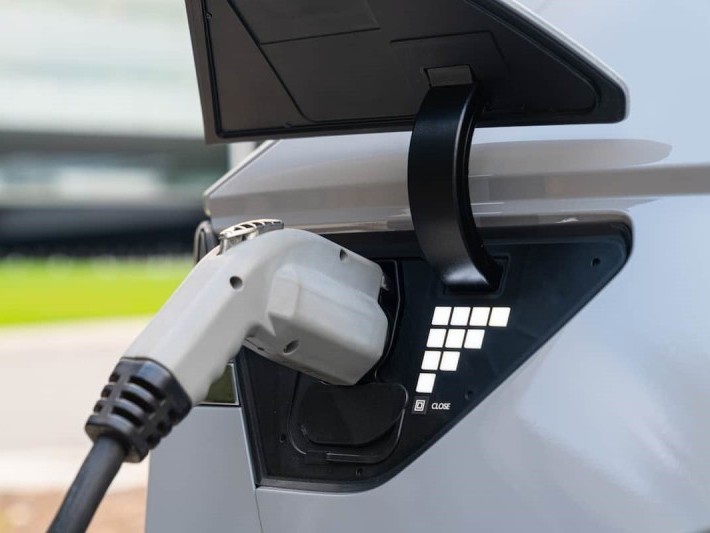
580,000 km & 87.7% Battery Health: Ioniq 5’s Incredible Durability
MichaelMay 6, 2025

Revolutionizing Hybrids: Hyundai’s New System vs. Toyota's Hybrid System
Kevin WongApr 22, 2025
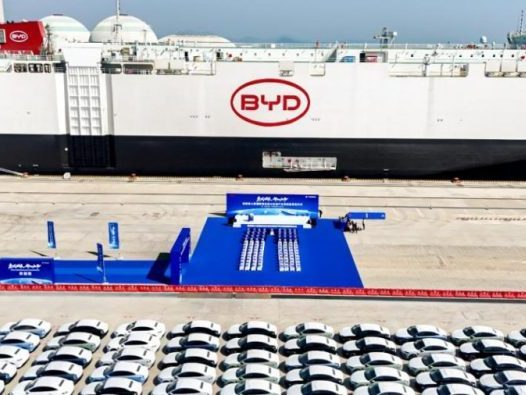
BYD Sets Global Sales Target of 5.5 Million Units for 2025
RobertMar 26, 2025
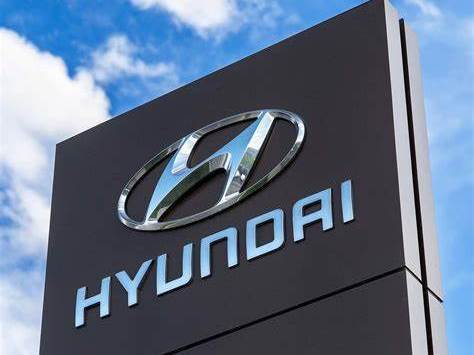
Hyundai is to launch an all-solid-state EV battery production line, but who's leading?
MichaelFeb 12, 2025
View More





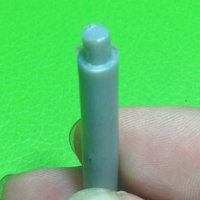





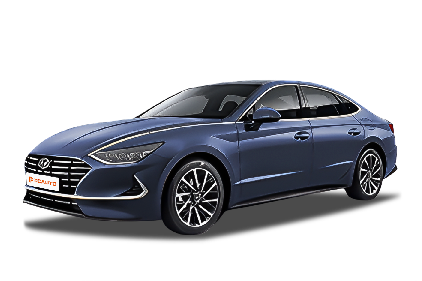


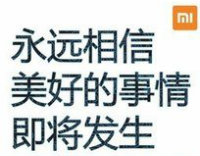


Pros
Cons